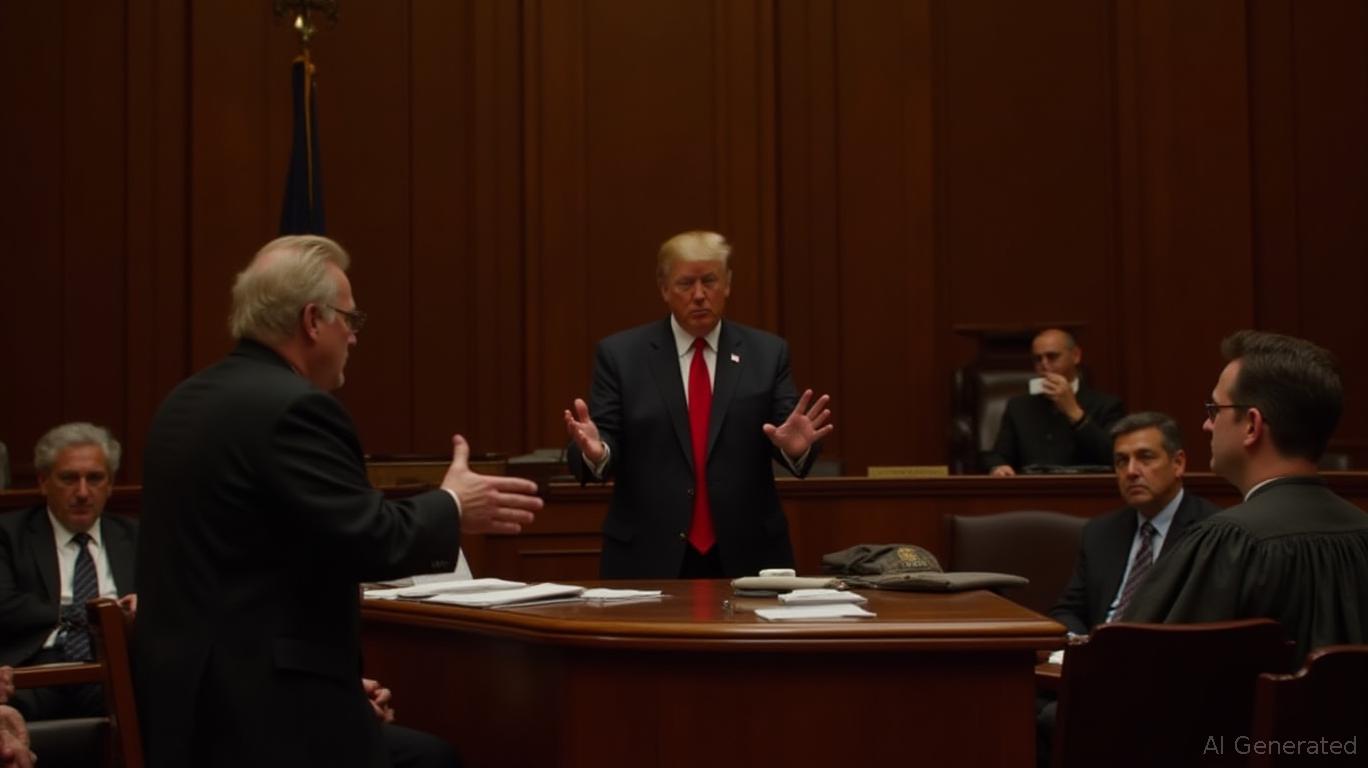EU Aims for Coordinated Financial Regulation Amid Resistance from Member States
- EU proposes centralized financial oversight via ESMA, mirroring the U.S. SEC model to unify stock and crypto market regulation across 27 nations. - Aims to reduce regulatory fragmentation, lower cross-border compliance costs, and strengthen Europe’s competitiveness against U.S. financial markets. - France and others oppose "passporting" rules under MiCA, fearing regulatory arbitrage, while ESMA seeks expanded authority to enforce consistent crypto rules. - Draft legislation expected by December faces res
The European Union is preparing for a major transformation of its financial regulatory system, aiming to consolidate the supervision of both stock and cryptocurrency markets under a single authority similar to the U.S. Securities and Exchange Commission (SEC). These planned changes are intended to resolve the current fragmentation among national regulators, lower the costs associated with cross-border transactions, and enhance Europe's standing as a leading global financial center, according to
Reports indicate that the European Commission is in the process of drafting new laws that would broaden the European Securities and Markets Authority's (ESMA) powers, giving it direct oversight of stock markets, crypto exchanges, and other essential financial infrastructure,

This initiative supports the EU's ongoing objective of building a "capital markets union" to make it easier for startups and infrastructure projects to access funding. At present, the existence of separate financial regulators in each member state creates obstacles for businesses looking to operate across borders, as highlighted in the Coinpaper report. By unifying regulatory oversight, the EU aims to cut cross-border trading expenses and develop a more cohesive market that can compete with the U.S., according to
The proposal also intends to close enforcement loopholes in the Markets in Crypto-Assets Regulation (MiCA), which became effective in December 2024. MiCA allows crypto companies licensed in one EU nation to extend their authorization throughout the bloc. However, France and other countries have expressed concerns that this could prompt firms to seek licenses in regions with less stringent oversight, as reported by Cointelegraph. In September, France's financial regulator indicated it might restrict passporting rights unless ESMA is given direct authority over major crypto companies, a concern also noted by Coindoo. Austria and Italy have likewise called for broader ESMA powers to guarantee consistent application of MiCA regulations, according to the Coinpaper report.
The European Commission is anticipated to release a draft of the proposal by December, sources told the Financial Times (as previously reported by Cointelegraph). Should the reform be approved, it would represent a landmark change, equipping ESMA with powers similar to those of the SEC and demonstrating the EU's commitment to integrating its financial markets, as explained by Coindoo. Nevertheless, some member states are hesitant to relinquish authority over their own regulatory systems. ESMA Chair Verena Ross has recognized these difficulties, noting that the proposal seeks to address "market fragmentation" while respecting regional differences, a point emphasized by Coindoo.
The push for these changes comes amid increasing competition with the U.S. and other major financial hubs. As the U.S. continues to draw investment with its large, unified markets, the EU's effort to establish a centralized regulator highlights its goal of offering a strong, unified alternative, as discussed by Coindoo. The ultimate success of the plan will rely on the EU's ability to balance national priorities with its vision for a unified financial landscape.
Disclaimer: The content of this article solely reflects the author's opinion and does not represent the platform in any capacity. This article is not intended to serve as a reference for making investment decisions.
You may also like
Bitcoin Updates: Federal Reserve's Careful Approach and ETF Withdrawals Lead to $1.13 Billion in Crypto Sell-Offs
- Cryptocurrency markets crashed on Nov 3, 2025, with $1.13B in liquidations as Bitcoin fell below $107,500 and altcoins dropped over 6% amid Fed policy uncertainty. - Federal Reserve Chair Powell's cautious stance on rate cuts and ETF outflows—including $1.15B from BlackRock—exacerbated sell-offs, boosting dollar strength and risk aversion. - October's "black swan" event—$19.37B in 24-hour liquidations—set the stage for November's turmoil, with Solana and Dogecoin losing 60–80% of value during prior volat

Supreme Court Decision on Tariffs May Reshape Limits of Presidential Authority
- U.S. Supreme Court will rule on Trump's IEEPA-based tariffs, testing presidential power limits under constitutional law. - Lower courts invalidated tariffs, arguing Congress retains tariff authority under Article I despite IEEPA's emergency powers. - "Major questions doctrine" could limit executive overreach, but conservative justices may split on emergency powers interpretation. - Trump threatens retaliation by reimposing tariffs via alternative statutes if IEEPA case fails, complicating but not halting

Stellar (XLM) Falls 8.2% as Smart Contracts Expand and November Patterns Emerge
- Stellar (XLM) fell 8.2% in 24 hours amid November trends but shows strong fundamentals with 700% smart contract growth and $5.4B RWA volume. - Protocol 23 upgrade boosted scalability to 5,000 TPS, while partnerships with remittance providers and banks drive institutional adoption and low-cost transactions. - Historical backtests reveal XLM typically rebounds 5.3% within 5 days post-crash, though gains fade after 10 trading days due to market volatility. - Analysts highlight Stellar's real-world utility,
Trader With 100% Win Rate Loses $38 Million in Market Meltdown